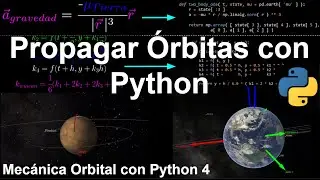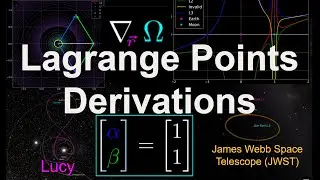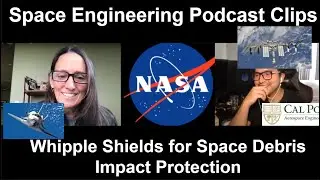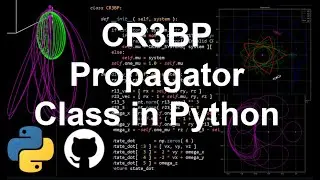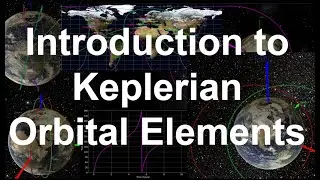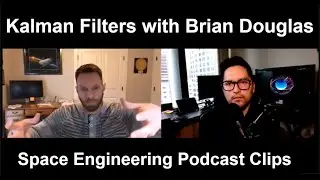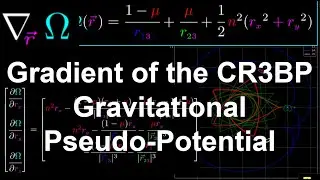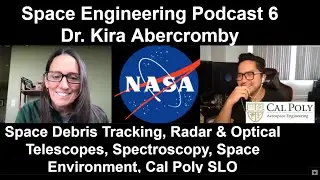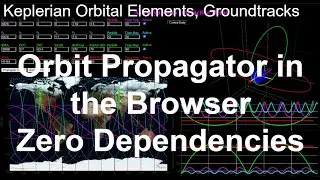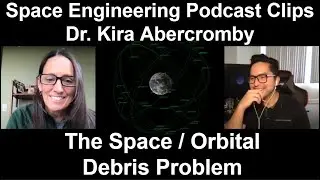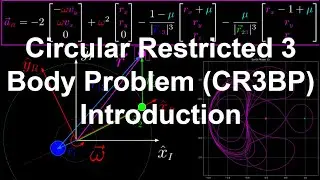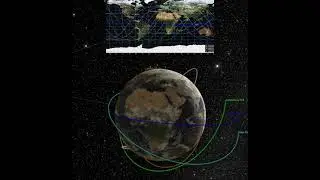Gravity Turn Rocket Trajectories Explained | Rocket Trajectories 4
In this video we will be going over gravity turn rocket trajectories equations of motion, and why they are so useful. We’ll be going over the rocket’s equations of motion modeled in 3D cartesian coordinates.
Link to GitHub repository: https://github.com/alfonsogonzalez/AWP
There are a lot of sources on the internet that model gravity turn trajectories with a scalar value for velocity and flight path angle as part of the rocket state vector, BUT in this video we will be going over the equations of motion for gravity turn rocket trajectories purely in 3D position and velocity vectors.
This way, these rocket simulations can be smoothly implemented with all of the other orbital mechanics software in the github repo and the videos on this channel.
Some examples of future implementations / videos for this series are:
Latitude / longitude coordinates of launch sites (like cape canaveral in the US and the Satish Dhawan space center in India), which involves converting those latitude / longitude coordinates to an earth-centered earth-fixed frame position vector, which can then be converted to the earth centered equatorial inertial frame (J2000), which would be the initial conditions of the rocket propagation. Also note that this also involves incorporating ephemeris time since the earth’s orientation is a function of time.
We can also add the Earth’s rotation as part of the initial state vector, which again is a function of latitude / longitude coordinates.
Another advantage of modeling these trajectories this way is that the curvature of the Earth is already accounted for, since we are already using Newton’s universal law of gravitation to model Earth’s gravitational pull, and we can just implement a stop condition that if the norm of the position vector is less than earth’s radius, the rocket has crashed.
Once the trajectory is propagated, we can also create SPICE kernels from them and do all the type of work that we are used to doing with SPICE, including plugging in this BSP kernel to Cosmographia for some high fidelity animations.
So overall, I am proposing that modeling rocket trajectories with the state vectors that are position, velocity, and mass is more intuitive and useful than modeling them using flight path angle as a state variable. Please let me know what you think about this idea in the comments.
A gravity turn trajectory means that the thrust vector is always pointed in the direction of the velocity vector. This is useful because that thrust causes an acceleration to be 100% in the direction of velocity, therefore maximizing the increase in the magnitude of the velocity vector (none of the acceleration goes into rotating the vector).
Its called gravity turn because the gravitational acceleration is whats causing the rotation of the velocity vector. Since both thrust and drag vectors are aligned with the velocity vector, they cannot rotate it. In order for the velocity vector to rotate, it must be acted upon by a vector that is not parallel to it. Therefore, as long as the velocity vector is not pointed exactly toward (nadir) or exactly away (zenith) from the center of the Earth, the acceleration due to gravity will cause the velocity vector to rotate.
This is efficient because rotations of velocity vectors (even without changes in magnitude), are by definition a delta v (a change in the velocity vector), which therefore would take up fuel. This way, the rocket uses all its fuel solely to increase the magnitude of its velocity, and lets gravity take care of the rotation.
For a gravity turn trajectory to work, the velocity cannot be pointed zenith (directly way from the center of the Earth). Therefore, the rocket cannot begin its trajectory doing a gravity turn. Instead, a rocket begins its flight with a zenith (or vertical) thrust profile in order to gain elevation. If you watch a rocket launch, you will hear when the person calls out “the rocket has cleared the tower” on their vertical ascent.
Links to the Space Engineering Podcast (YouTube, Spotify, Google Podcasts, SimpleCast):
• Space Engineering Podcast Full Episodes
https://open.spotify.com/show/01Gcgly...
https://space-engineering-podcast.sim...
https://podcasts.google.com/feed/aHR0...
Link to Orbital Mechanics with Python video series:
• Orbital Mechanics with Python
Link to Spacecraft Attitude Control with Python video series:
• Spacecraft Attitude Control with Python
Link a Mecánica Orbital con Python (videos en Español):
• Mecánica Orbital con Python
Link to Numerical Methods with Python video series:
• Numerical Methods with Python
#rockettrajectory #gravityturntrajectory #rockettrajectories
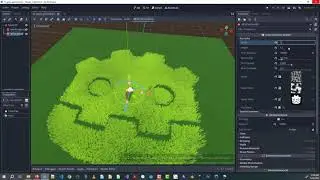





![[Osu!] The Quick Brown Fox - Big Money [$50] (93.57%)](https://images.mixrolikus.cc/video/0YOvOZeu1Qw)

